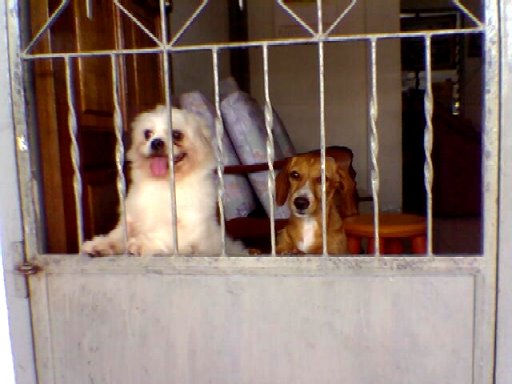Article From SubmitYOURArticle.com: Tips and Guide on How to Leash Train Your Dog
If you plan on taking your dog out of the house
or yard at any time, your dog will need to learn
how to walk on a leash. In fact, many
municipalities and most public parks will require
your dog to be leashed. Unfortunately, this can
be one of the hardest training tasks you will
have to master. While it may have been easy to
teach Fido to sit, lie down, or even shake hands
and roll over, when a dog gets out of the house
into the great wild places of your neighborhood,
his last thought will be how to please you.
It is very rare to see dogs that are good at
walking on a leash from the start. A dog, by
nature, loves to run, and many dogs have an idea
of "territory" that is much larger than your
house or even yard. Dogs also have an instinct,
held over from their ancestors the wolves, to
chase things that run, to pursue. Your dog will
need to learn how to behave on the leash whenever
he is out of the house.
This whole process can be very discouraging. How
many times have we seen adults walking their
fully grown dog that they can't control, getting
pulled along the sidewalk or yanked side to side
as the dog notices something exciting. Once a
dog reaches this stage, it becomes very hard to
correct the behavior (it's not impossible though,
so don't give up!)
The best time to teach a puppy good walking
habits is during puppyhood. When a dog is still
a puppy, he is still finding ways to make you
happy and will be more open to doing things your
way. Find a collar or harness that fits your
puppy and a leash and begin training right away.
If he can learn it when he is still a puppy, it
will become natural to him into adulthood.
A note on harnesses: There are many different
dog walking devices, from cloth collars to choke
collars, to spike or prong collars, but easily
the most effective is the harness. A harness
clips in front of and behind the legs and its
design means that, instead of choking your dog
when he pulls, which can harm him; it instead
just restricts his movement.
Some harnesses are even designed so that they
will lock up in the underarms keeping the legs
from moving (uncomfortable but not painful) until
the pressure is released. Most dog trainers tend
to promote positive reinforcement as they think
it is more effective.
The important thing to realize is that you and
your dog will have to learn to walk together.
Every dog owners have their own preference when
it comes to walking their dog. Dogs will response
differently to various people as well. You need
to be able to feel in a way, how your dog is
walking.
Start by taking your dog out into an open field
or park (hopefully with few people). Provide
some slack on the leash and walk naturally. If
you feel that the dog is starting to pull or go
off in the wrong direction, instead of yanking
hard on the leash, simply stop suddenly. Your
dog will realize that he is causing the
discomfort whenever he tries to pull.
If you need to get your dog's attention, say if
there is a rabbit or child you feel that your dog
may want to run after, use short, deliberate
jerks. Some trainers have found that slapping
the leash lightly, such that it hardly pulls on
the collar or harness but cause a noticeable
vibration and sound, is also effective.
If your dog tends to pull and walks ahead of you,
try to walk in a circle. Abrupt changes in
direction will teach your dog to be on his toes,
ready to respond to your movements instead of
flying off ahead. Try both inside (you turn into
your dog) and outside (turning away from your
dog) circles.
Plenty of praise and your dog favorite treats are
the best tools to help train your dog to walk
properly. Dogs are always keen to please their
owners. Your dog will be happy if he knows that
you are, he will be happier if there are treats
as rewards as well.
In extreme cases, if your dog is simply not
responsive to normal training, a prong collar may
be your only option. The collar will sits nicely
on your dog's neck when he is walking normally.
When he decides to pull, the prongs will begin to
dig into the neck causing momentary pain. Your
dog will pick up soon that pulling is not good.
----------------------------------------------------
It is common for dogs to get jealous of their
owners. They may try to break up a hugging couple
or bark for attention when you are not giving
them any. To learn more about canine health care
and canine dog supplies, visit us at:
http://www.caninetouch.com/
http://www.caninetouch.com/category/supplies/
EasyPublish this article: http://submityourarticle.com/articles/easypublish.php?art_id=122669














.jpg)






.jpg)

0 comments:
Post a Comment